German defense contractor Rheinmetall is pitching a containerized launcher concept for Hero family loitering munitions, also known as other kamikaze drones, from Israeli firm UVision. The modified shipping container with 126 launch cells opens up a host of operational possibilities on land and at sea. The War Zone has called attention to the value of notional capabilities exactly like this in the past, including in the maritime domain.
A rendering of the shipping container launch system is included in a Rheinmetall brochure. Rheinmetall and UVision signed a strategic partnership agreement regarding the Hero family in 2021, which includes the production of certain versions in Europe via Rheinmetall’s Italian subsidiary RWM Italia S.p.A. The Hero product line has been steadily growing in popularity internationally in recent years, including with the U.S. military.
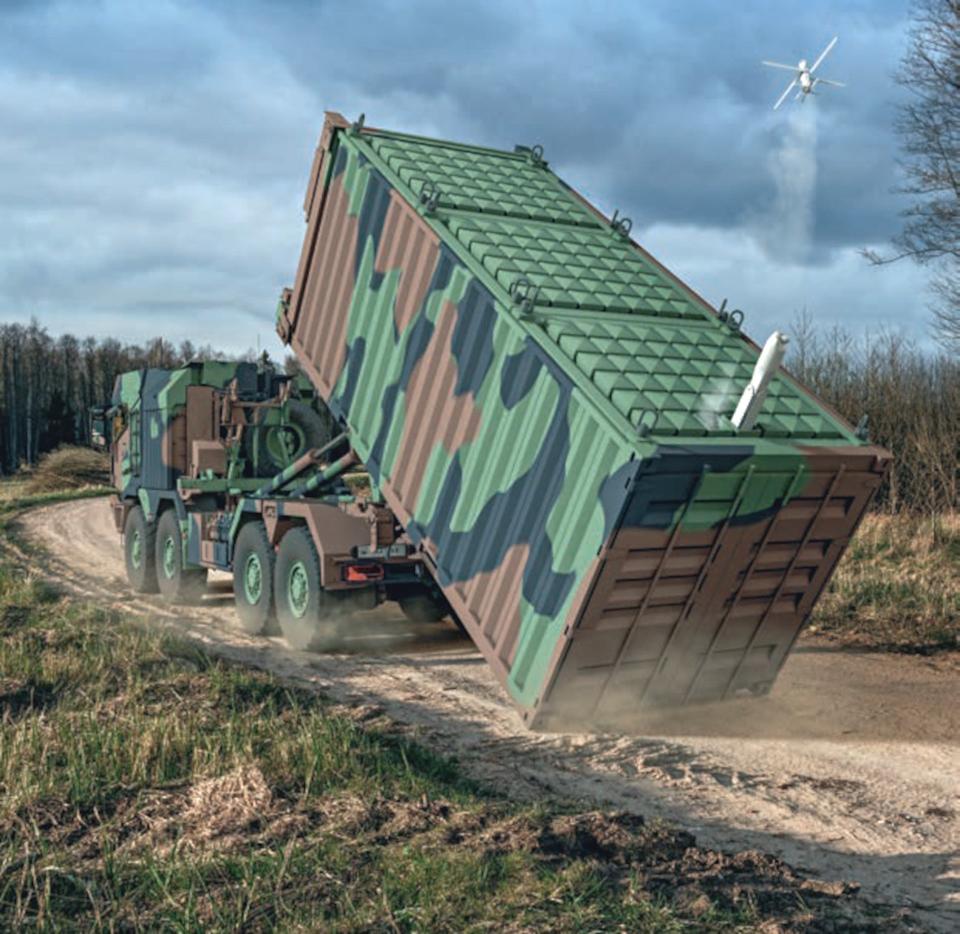
Specific details about Rheinmetall’s containerized Hero loitering munition launcher are limited and The War Zone has reached out for more information.
The rendering looks to show an ISO-standard shipping container with a total of 126 launch cells in three distinct 42-cell arrays. This points to a modular scalable system that could be adapted to 10, 20, and 40-foot-long containers with differing numbers of total cells.
What specific types of Heros the containerized launch system might be to launch is unclear, but the rendering looks to show Hero-120s being fired. The Hero-120 is one of the most popular types within the larger Hero family.
https://www.youtube.com/watch?v=LV6Czl2Lowg
Hero-120 has a maximum range of between around 25 and 37 miles (40 and 60 kilometers), and it can stay aloft for up to 60 minutes, according to Rheinmetall and UVision. The baseline version has a high-explosive warhead weighing around 10 pounds (4.5 kilograms). Warheads better optimized for use against armored vehicles, as well as dual-purpose ones that combine anti-personnel and anti-armor effects, are also available.
The Hero-120 has an operator-in-the-loop control system, a concept partially pioneered by Israeli firms along with the basic idea of loitering munitions. This allows a human user to ‘see’ what the munition sees via its nose-mounted electro-optical and infrared cameras throughout the entire course of its flight. This, in turn, gives the operator the ability to make fine course corrections for improved accuracy in the terminal phase or to wave off attacks entirely should circumstances change, such as the sudden appearance of innocent bystanders in the target area. The sensors also help with positive target identification and give Hero-120s a secondary surveillance and reconnaissance capability.
Control of Hero-120s can be passed off from one operator to another, including personnel riding in helicopters or other vehicles, which can help extend their functional range beyond the reach of line-of-sight links to the launching platform. Hero-120s are also capable of operating “with a high degree of automation,” including the ability to attack a designated set of coordinates without any further operator input, according to UVision.
The complete Hero family includes types that are smaller and larger than the Hero-120, with differing performance and warhead sizes, but that all operate in the same general manner. The long-rest-range member of the Hero line, the Hero-1250, has a maximum range of around 124 miles and, if it could fired from Rheinmetall’s containerized launcher, would give the system a stand-off strike capability.
In 2022, Rheinmetall and UVision also unveiled a line of quadcopter-type loitering munitions that are marketed as the Hero-R (for rotary wing) series.
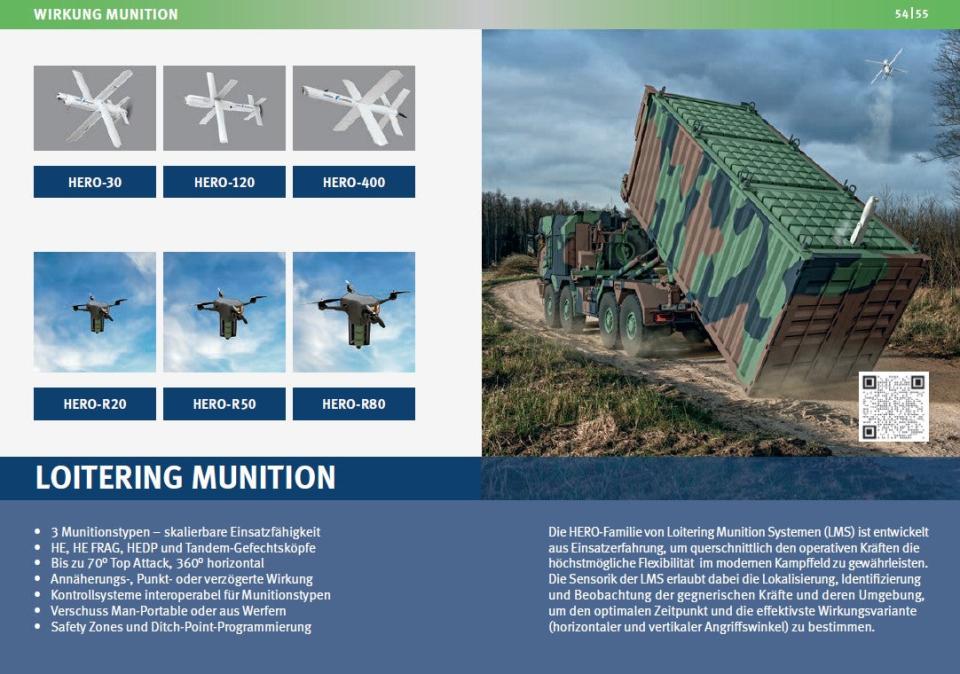
There are already several available methods for employing different types of Hero loitering munitions. This includes man-portable single-tube launchers, as well as multi-cell types integrated onto armored vehicles and fitted to crewed and uncrewed watercraft.
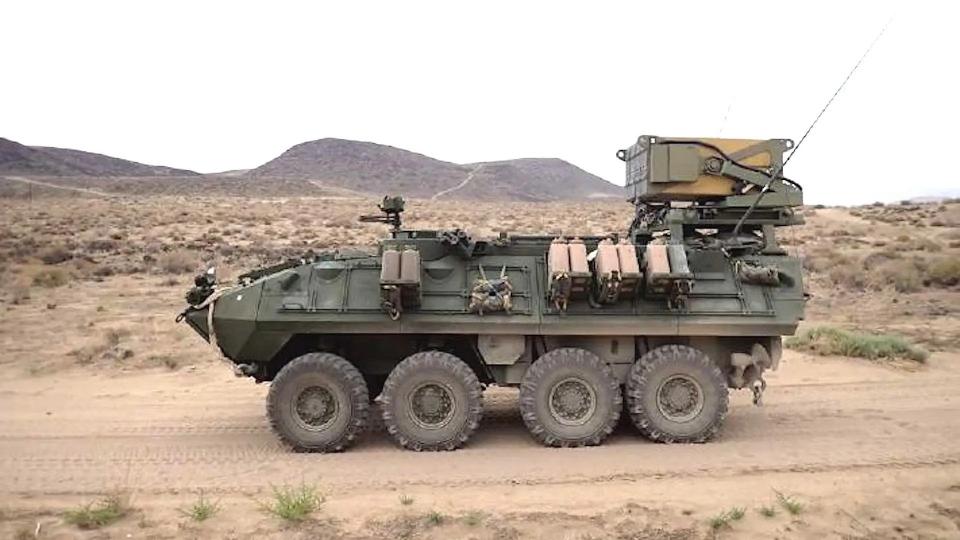
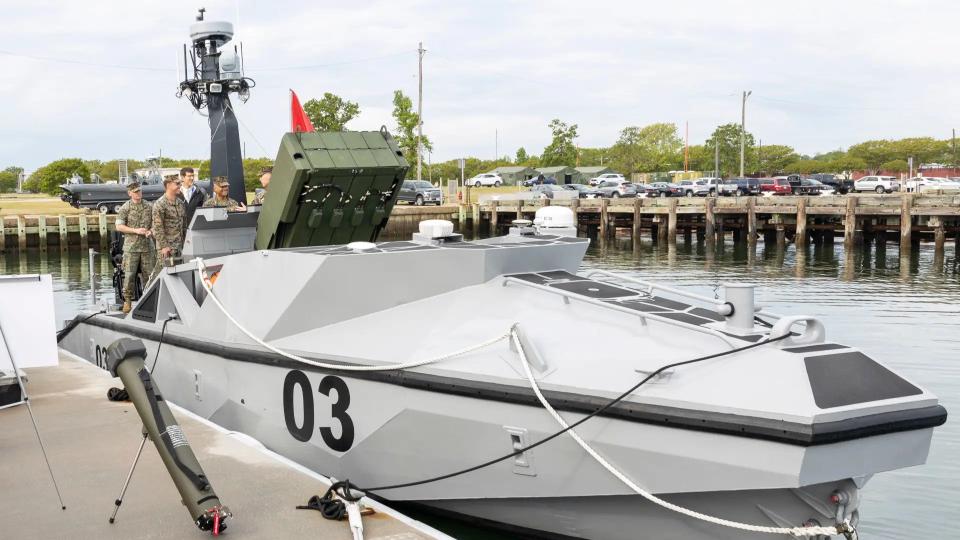
Air-launched options for Hero types have also been demonstrated.
https://www.youtube.com/watch?v=FkhF_NrJBQg
Even if Rheinmetall’s containerized launcher can only be used to fire Hero-120s, this could still be a very potent combination. A single container with 126 launch cells, and potentially even more depending on the system’s scalability, would allow a relatively small force to flood a significantly sized area with loitering munitions. In the past, The War Zone has highlighted the immense potential battlefield impact of a capability like this, which other countries, especially China, are also actively pursuing.
The video below shows a test of a Chinese truck-mounted launcher design capable of being loaded with up to 48 kamikaze drones.
https://www.youtube.com/watch?v=JUg5GZqttkA
Now, the war in Ukraine has fully driven home the point that even large numbers of commercial-off-the-shelf (COTS) uncrewed aerial systems converted into kamikaze drones can dramatically limit the ability of a conventional ground force, including one with heavily protected tanks and other heavy armored vehicles, to maneuver freely.
“I think what we’re seeing, and not just in Ukraine, but really around the world, is that the availability and the impact of small unmanned aerial systems and the threats that they present on the battlefield is here to stay,” Gabe Camarillo, the Under Secretary of the Army, said during a talk the Center for a New American Security (CNAS) think tank hosted back in May. “It is an evolution of a scale that is rapidly increasing to change the battlefield. So, in a nutshell… [this threat] is complex, ubiquitous, and is really transforming what the battlespace looks like.”
“It is very difficult to remain concealed in this environment. It is a very contested and congested battlespace,” Camarillo added. “We know that electromagnetic signature[s], the availability of ISR [intelligence, surveillance, and reconnaissance] capabilities brought about by these UAVs, really prevents any forces from being largely concealed or massed together.”
Highly maneuverable first-person view (FPV) kamikaze drones that require an operator to pilot them throughout their entire flight have become a particular scourge on both sides of the battlefield in Ukraine. Loitering munitions with ever-higher degrees of autonomy, especially when it comes to spotting and engaging targets without human input, will only compound this existing threat picture. Combining that increased autonomy with the ability to operate cooperatively in networked swarms looks set to be game-changing, as The War Zone has previously explored in detail.
Containerized launchers, whatever they are designed to fire, also just offer immense flexibility. With Rheinmetall’s system, any truck capable of carrying ISO shipping containers could be used to unleash hordes of Hero loitering munitions. Those same trucks could also bring the containers relatively rapidly to designated static sites, including after being brought to a general operating area first by plane or ship.
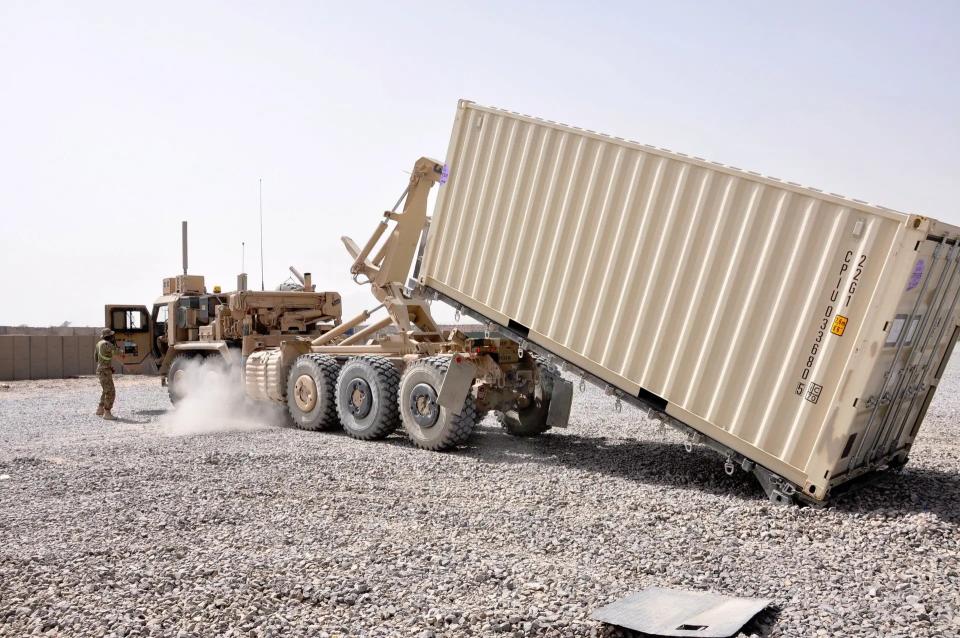
Any other platform, including trains or ships, capable of carrying standardized shipping containers could potentially be equipped with this launcher system, too. Kamikaze drones have already emerged as a very real threat in the maritime domain thanks in large part to Iranian-backed Houthi militants in Yemen. In a naval context, loitering munitions and long-range one-way attack drones might not be able to sink larger vessels, but could still cause so-called mission kills by targeting key systems like radars and communications arrays that would limit a warship’s capabilities or even render it entirely combat ineffective. Costly and lengthy repairs could then be required to get that ship fully back into the fight.
Ship-launched loitering munitions could also be used to destroy smaller watercraft, including explosive-laden uncrewed boats, another threat that the Houthis, as well as the war in Ukraine, have put a particular spotlight on. Last week, a Houthi drone boat attack in the Red Sea left the Liberian-flagged cargo ship M/V Tutor severely damaged and dead in the water. A member of its crew remains missing. You can read more about what is known about that attack here.
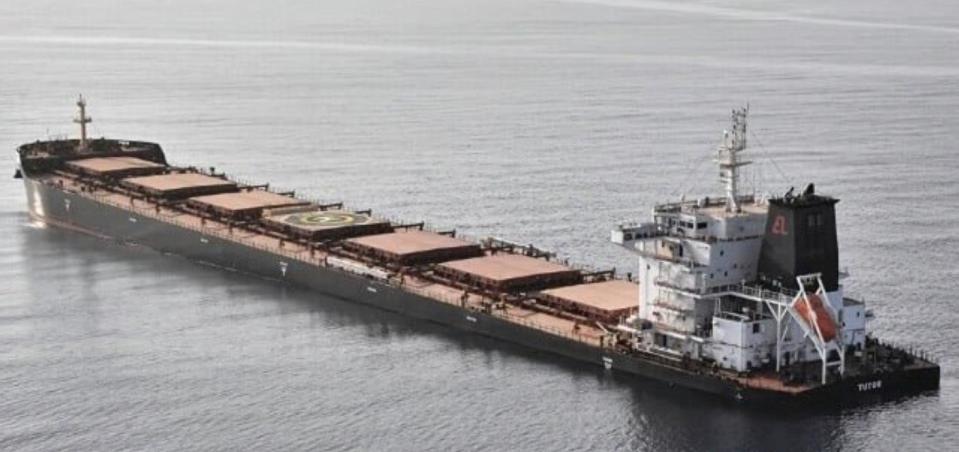
Ships could use loitering munitions to attack targets ashore, or fire them and then hand off control to forces further inland, as well.
Earlier this year, The War Zone laid out a detailed case for how enabling U.S. Navy ships to launch swarms of drones, including loitering munitions, could give them significant and increasingly critical additional strike, surveillance and reconnaissance, networking, and defensive capabilities. At the time, we highlighted the specific additional value that containerized launch systems would bring to the overall equation, writing:
“The drones in their launch tubes could also be packed in large quantities inside a customized shipping-like container and placed aboard any ship, for added flexibility. This could offer U.S. Navy support ships an aerial multi-role standoff capability. Yet having them installed and ready to go on major surface combatants, so they can be integrated into all the ship’s other capabilities – where they could even help defend the vessel – would be very advantageous. Still, a modular concept could make any ship with enough deck space a ‘shooter’ and a multi-role aerial capability mothership.”
Containerized launchers, regardless of whether they are employed on land or at sea, offer the inherent ability to be disguised as innocuous shipping containers, which creates targeting challenges for an opponent.
Altogether, containerized systems capable of launching large volumes loitering munitions and other drones make perfect sense. Rheinmetall’s particular take on the concept for use in combination with UVision’s Hero family may well turn out to be part of a broader trend.
Special thanks to user @lfx160219 on X for bringing the Rheinmetall brochure showing the containerized Hero launcher to our attention.
Contact the author: [email protected]
Source Agencies

